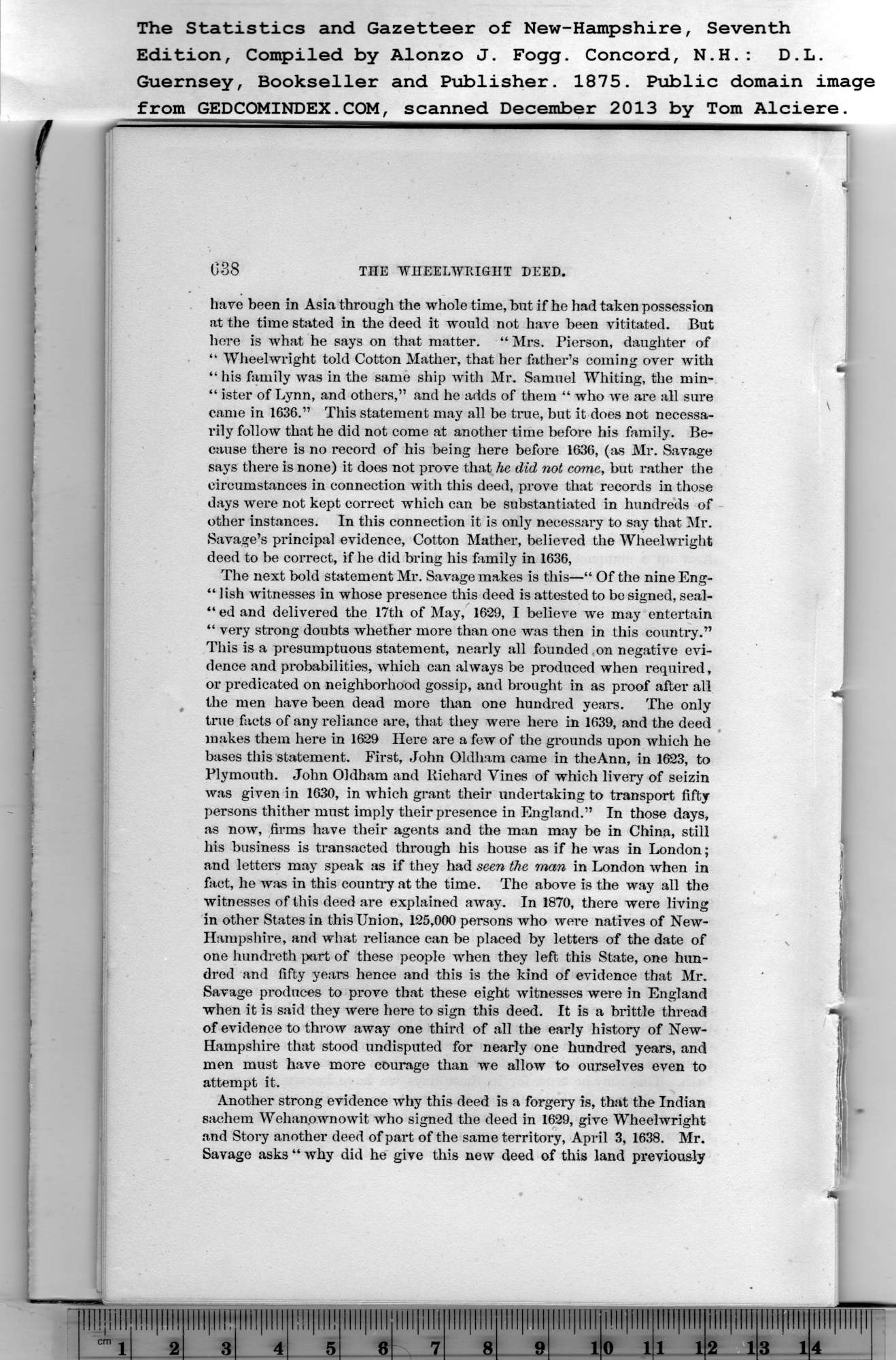|
038 THE WHEELWRIGHT DEED.
have been in Asia through the whole time, but if he had taken possession
at the time stated in the deed it would not have been vititated. But
here is what he says on that matter. “ Mrs. Pierson, daughter of
“ Wheelwright told Cotton Mather, that her father’s coming over with
“ his family was in the same ship with Mr. Samuel Whiting, the min-
“ ister of Lynn, and others,” and he adds of them “ who we are all sure
came in 1636.” This statement may all be true, but it does not necessa-
rily follow that he did not come at another time before his family. Be-
cause there is no record of his being here befoi*e 1636, (as Mr. Savage
says there is none) it does not prove that he did not come, but rather the
circumstances in connection with this deed, prove that records in those
days were not kept correct which can be substantiated in hundreds of
other instances. In this connection it is only necessary to say that Mr.
Savage’s principal evidence, Cotton Mather, believed the Wheelwright
deed to be correct, if he did bring his family in 1636,
The next bold statement Mr. Savage makes is this—“ Of the nine Eng-
“ lish witnesses in whose presence this deed is attested to be signed, seal-
“ ed and delivered the 17th of May, 1629, I believe we may entertain
“ very strong doubts whether more than one was then in this country.”
This is a presumptuous statement, nearly all founded on negative evi-
dence and probabilities, which can always be produced when required,
or predicated on neighborhood gossip, and brought in as proof after all
the men have been dead more than one hundred years. The only
true facts of any reliance are, that they were here in 1639, and the deed
makes them here in 1629 Here are a few of the grounds upon which he
bases this statement. First, John Oldham came in theAnn, in 1623, to
Plymouth. John Oldham and Richard Vines of which livery of seizin
was given in 1630, in which grant their undertaking to transport fifty
persons thither must imply their presence in England.” In those days,
as now, firms have their agents and the man may be in China, still
his business is transacted through his house as if he was in London;
and letters may speak as if they had seen the man in London when in
fact, he was in this country at the time. The above is the way all the
witnesses of this deed are explained away. In 1870, there were living
in other States in this Union, 125,000 persons who were natives of New-
Hampshire, and what reliance can be placed by letters of the date of
one hundreth part of these people when they left this State, one hun-
dred and fifty years hence and this is the kind of evidence that Mr.
Savage produces to prove that these eight witnesses were in England
when it is said they were here to sign this deed. It is a brittle thread
of evidence to throw away one third of all the early history of New-
Hampshire that stood undisputed for nearly one hundred years, and
men must have more courage than we allow to ourselves even to
attempt it.
Another strong evidence why this deed is a forgery is, that the Indian
sachem Welian.ownowit who signed the deed in 1629, give Wheelwright
and Story another deed of part of the same territory, April 3, 1638. Mr.
Savage asks “ why did he give this new deed of this land previously
PREVIOUS PAGE ... NEXT PAGE
This page was written in HTML using a program written in Python 3.2
|
